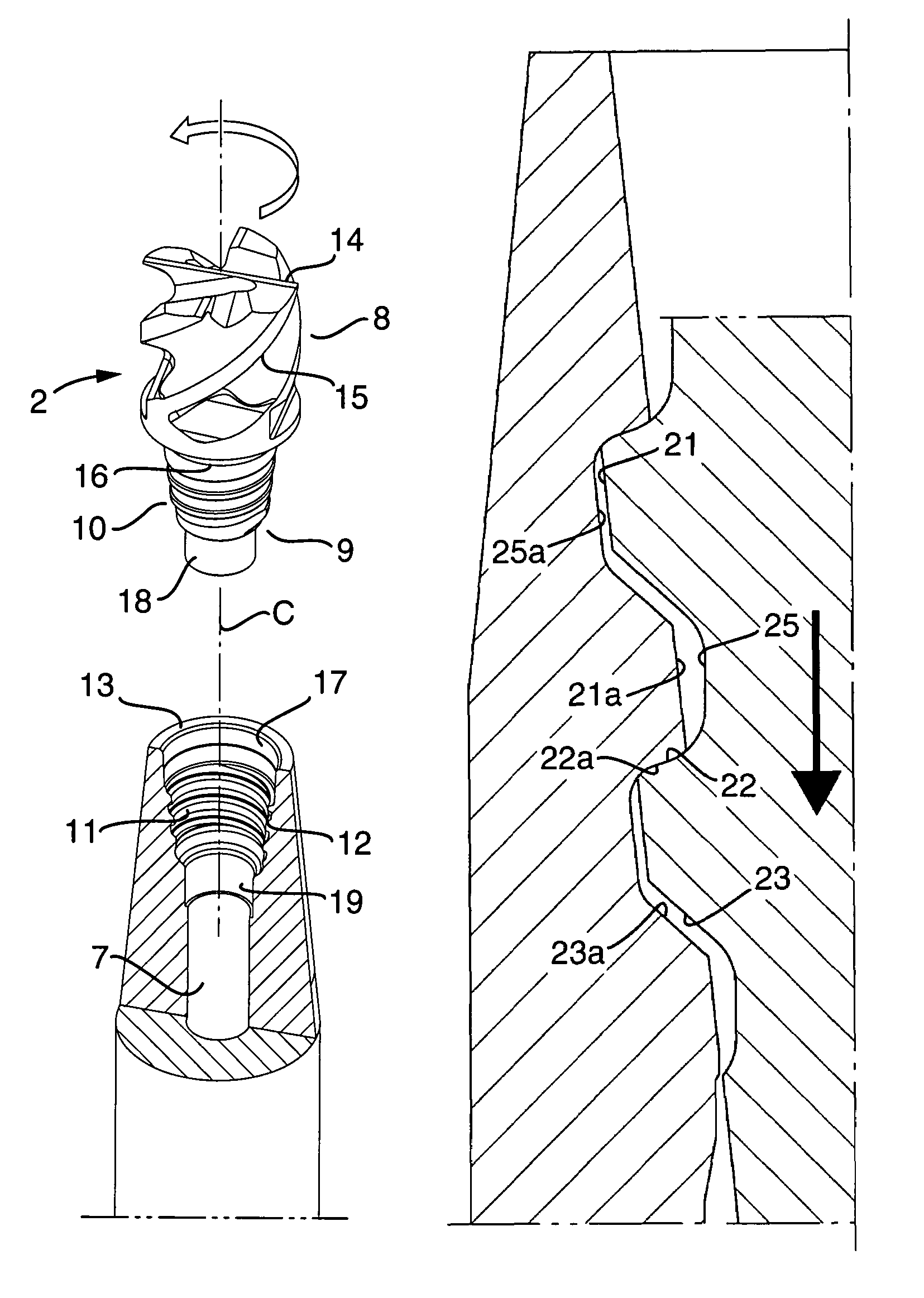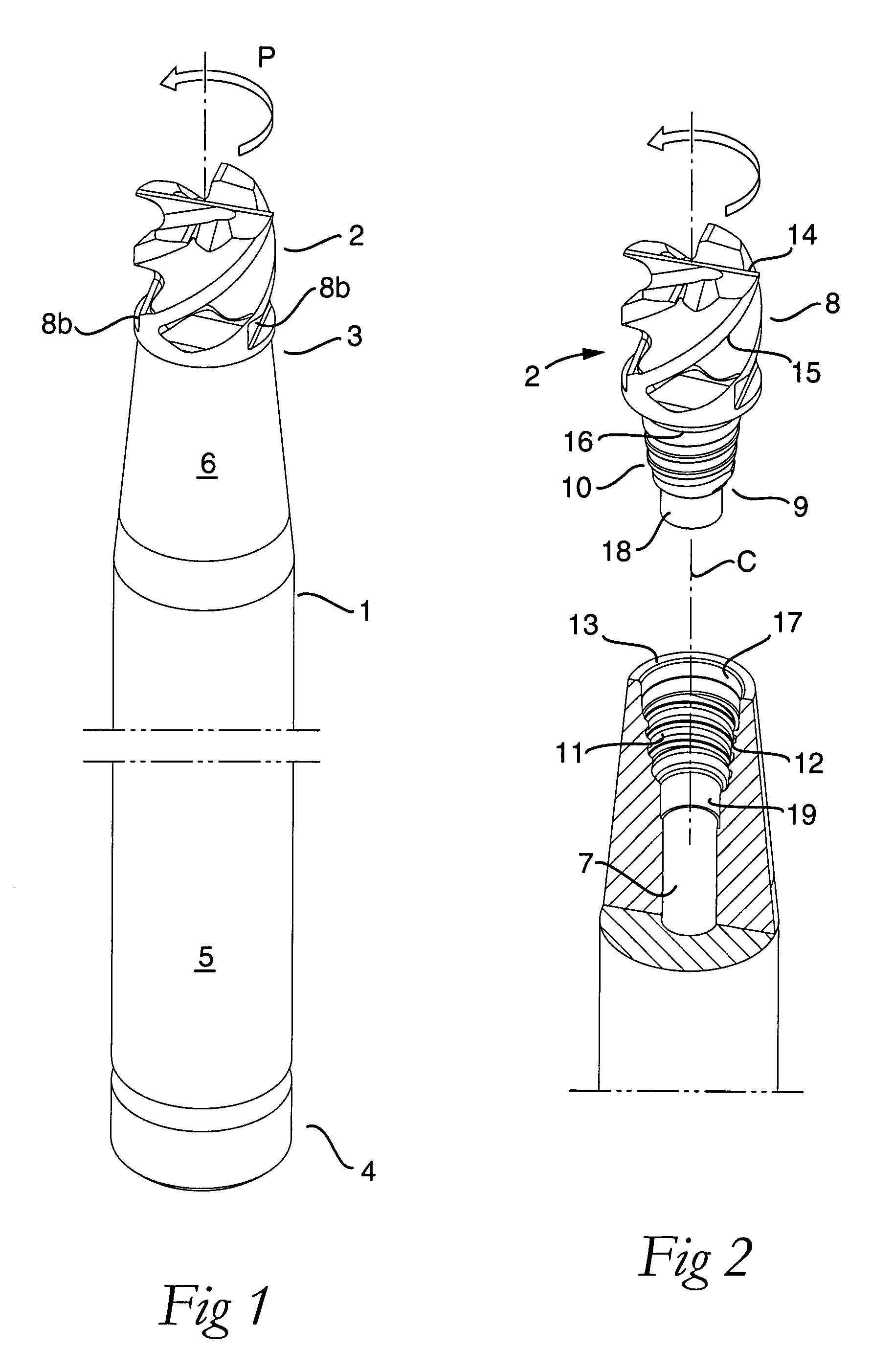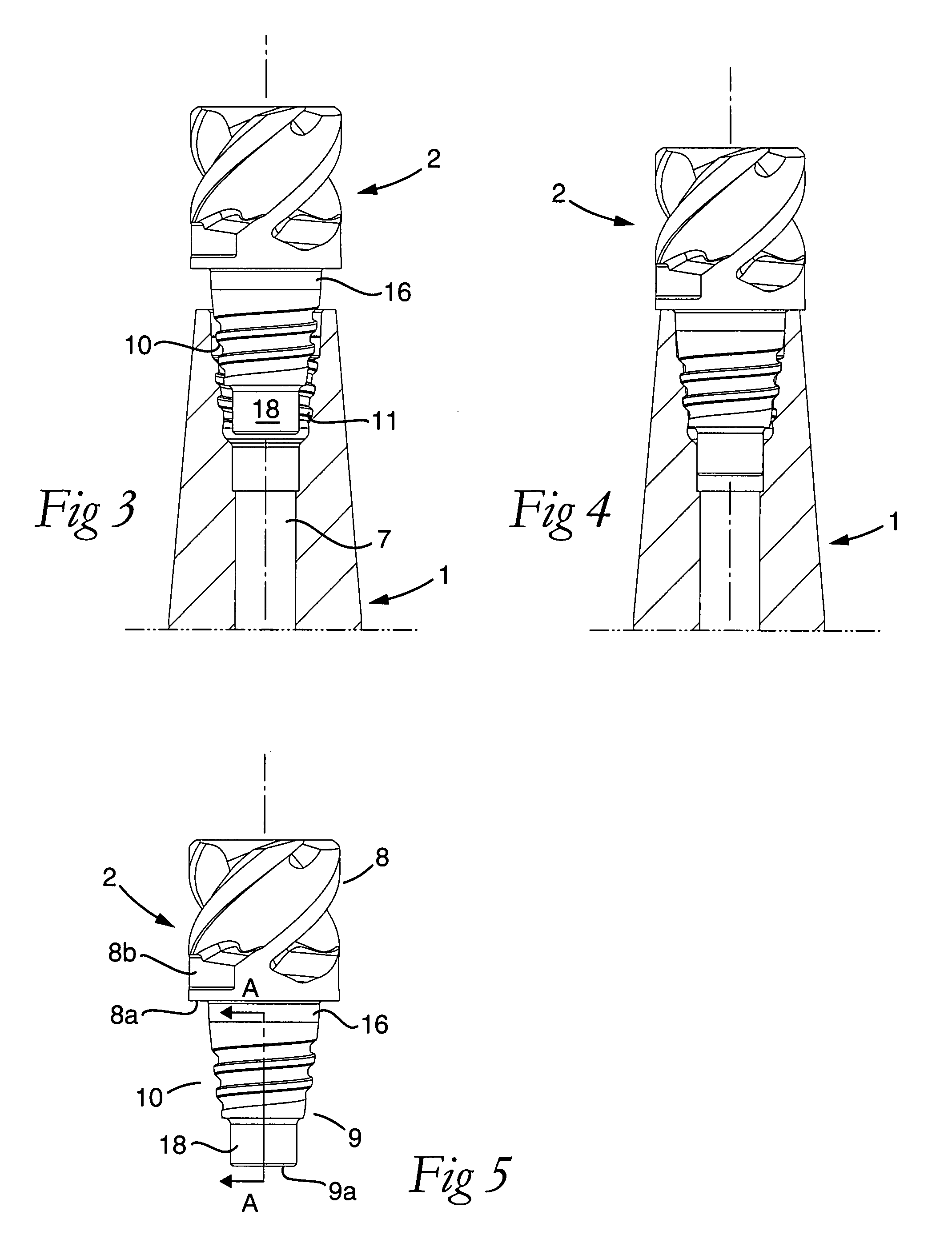Tool for chip removing machining as well as a part and threaded joint therefor
a technology for cutting and machining tools, which is applied in the direction of manufacturing tools, shaping cutters, wood boring tools, etc., can solve the problems of difficult mastery of the interface between the loose top and the basic body, the inability to integrate with the cutting body, and the high cost of the basic body. achieve the effect of avoiding damage to the thread ridg
- Summary
- Abstract
- Description
- Claims
- Application Information
AI Technical Summary
Benefits of technology
Problems solved by technology
Method used
Image
Examples
Embodiment Construction
[0027]FIGS. 1 and 2 show a tool intended for chip removing machining of, for example, metallic work pieces. The tool includes two parts, e.g., a basic body 1 and a so-called loose top 2 in the form of a milling-cutter body, that are detachably connected to each other via a threaded joint. As shown, the basic body 1 has a long narrow shape and includes front and rear ends 3,4. The shape of the basic body 1 is characterized in that it is rotationally symmetrical, e.g., the outside of the basic body 1 includes a cylindrical surface 5 as well as a conical surface 6. The basic body 1 may be tubular by including a central through hole 7 (see FIG. 2), although the basic body may alternatively be solid.
[0028]The loose top 2 includes a front head 8 and a rear pin 9. A male thread 10 is formed on the rear pin 9 and arranged to co-operate with a female thread 11 in a hollow space 12, which mouths in the front end 3 of the basic body 1. This mouth is surrounded by a ring-shaped shoulder surface...
PUM
| Property | Measurement | Unit |
|---|---|---|
| angle | aaaaa | aaaaa |
| angle | aaaaa | aaaaa |
| angle | aaaaa | aaaaa |
Abstract
Description
Claims
Application Information
 Login to View More
Login to View More - R&D
- Intellectual Property
- Life Sciences
- Materials
- Tech Scout
- Unparalleled Data Quality
- Higher Quality Content
- 60% Fewer Hallucinations
Browse by: Latest US Patents, China's latest patents, Technical Efficacy Thesaurus, Application Domain, Technology Topic, Popular Technical Reports.
© 2025 PatSnap. All rights reserved.Legal|Privacy policy|Modern Slavery Act Transparency Statement|Sitemap|About US| Contact US: help@patsnap.com



